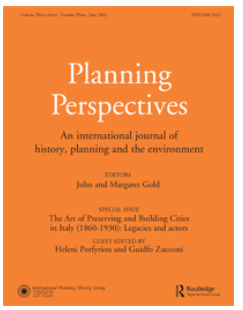The art of preserving and building cities in Italy (1860–1930): legacies and actors
Heleni Porfyriou, Guido Zucconi

Abstract
In the context of early twentieth century Italy, Gustavo Giovannoni (1873– 1947) played a pivotal role. Father of artistic city building and urban conservation in Italy, founder of its first School of Architecture (in Rome in 1920) and of a holistic approach to architecture, conservation and planning through l’architetto integrale (see below), his work had a long-lasting appeal which also stemmed from his contribution to the 1939 Italian law on landscape preservation, later extended also to historic urban contexts. He died in 1947, but it was only in the late sixties that his legacy was recognized first by Manfredo Tafuri and later -for the French audience- by Françoise Choay. After decades of damnatio memoriae –partially due to his biographical correspondence with Fascism– scholarly research reassessed his multistranded contribution.
Porfyriou, H., and G.V. Zucconi (Eds. Special Issue). “The art of preserving and building cities in Italy (1860–1930): legacies and actors.” Planning Perspectives 37, no. 3 (2022): 433-444. Published online: 29 Mar 2022.https://doi.org/10.1080/02665433.2022.2053881


